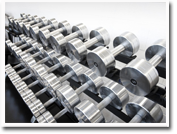I can’t Squat today, my knees are killing me!
How many times have you heard it, said it, or thought it? If you’re in the 20-46 year age range, you’re probably feeling it right now after a heavy lift day! Over the years our joints wear down from the constant wear and tear. Sometimes taking a day off here or there might help, but there’s always going to be that ongoing pain! You don’t have to be a big power lifting to experience joint pain. Anyone from a runner to a rugby player needs some joint support.
What if there was an ingredient proven to be effective to not only reduce joint pain, but the inflammation associated with joint pain? Well I have good news for you, there is! For those of you who have never taken BioRhythm’s Regenerate, let me introduce one of the active ingredients in Regenerate Cissus Quadrangularis. Cissus Quadrangularis is sourced from vines in Africa and Asia. It’s actually one of the most commonly used medicinal plants in all of Thailand! They must know something we didn’t, but now we do!
Cissus Quadrangularis was recently tested with Twenty Nine men ages 20-46. Each of the twenty nine was experiencing some sort of joint pain/discomfort as a result of strenuous activity. Each individual received a dosage of Cissus Quadrangularis over an 8 week period. During the next 8 weeks the subjects completed a questionnaire(Western Ontario and McMaster Universities Index of Osteoarthritis [WOMAC]) to determine their joint pain. The Subject ratings for multiple variables within the WOMAC Index improved (decreased) significantly (P < 0.05), with the subject mean total WOMAC score decreasing from 25.4 ± 2.4 to 17.4 ± 2.1 (~31%), pre- to post-intervention.
Wow-what a difference Cissus Quadrangularis made in just these twenty nine individuals! They felt a noticeable difference in just 8 weeks of administration!
Reference:
Bloomer RJ, Farney TM, McCarthy CG, Lee SR.
Cissus Quadrangularis reduces joint pain in exercise-trained men: a pilot study
Phys Sportsmed. 2013 Sep;41(3):29-35



